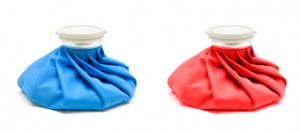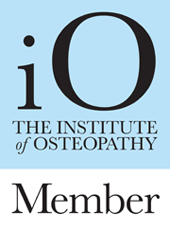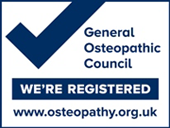Osteopathy, ice & heat

Ice and heat are easy, natural and cost effective methods of pain relief. But have you ever wondered which is most appropriate for you?
Ice
As a general rule of thumb, the application of ice is advisable for injuries less than six weeks old. Why? Ice constricts blood vessels, numbing pain, relieving inflammation and limiting bruising. A packet of frozen peas is ideal as they are malleable enough to wrap around most body parts. We advise that our patients wrap the packet in a tea towel so as to avoid ice burn on the skin. Freezing gels and sprays are useful alternatives when patients are ‘on the go’ and do not have access to a freezer.
Heat
Applying heat to acute injuries may delay the healing process, increasing inflammation. Instead, heat is the better option for injuries lasting six weeks or more and more chronic conditions such as arthritis. Why? Heat increases blood flow, relaxing tight muscles and relieving aching joints.
Useful scenarios
Osteoarthritis (degenerative change to the smooth cartilage surfaces between joint surfaces – e.g. knee, shoulder, ankle, low back):
- Heat eases chronically stiff joints, relaxing tight muscles.
Gout (chronic, inflammatory arthritis – e.g. big toe, ankle, heel, knee, wrist, elbow):
- Ice calms flare-ups and eases pain.
Headaches (pain from nerves or blood vessels in the head or from muscles in the neck):
- Ice numbs throbbing head pain.
- Heat relaxes painful neck muscle spasm.
Muscle strains (pulled muscles or injured tendons – e.g. hamstring, calf, back and neck):
& / or
Ligament sprains (stretching or tearing of ligaments supporting joints – e.g. knee, shoulder, ankle):
- Ice reduces inflammation (redness, swelling and tenderness) and numbs pain.
- Heat eases stiffness once inflammation has subsided.
Tendinitis (acute irritation post-activity in tendons attaching muscles to joints – e.g. Achilles, shoulder):
- Ice reduces inflammation and numbs pain.
Tendinosis (chronic inflammation, degenerative change and stiffness in tendons attaching muscles to joints – e.g. shoulder, knee):
- Heat relieves stiffness once inflammation has subsided.
Woburn Osteopaths are delighted to offer free advice regarding the application of ice or heat. Contact us today: 01525 290615 or [email protected].


